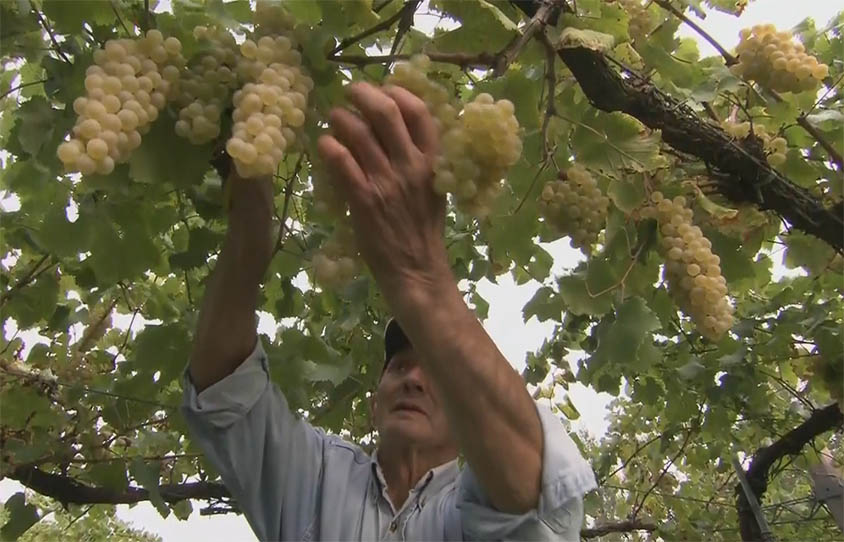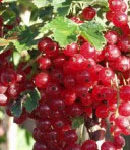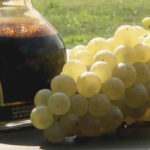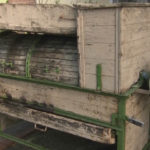Winogrona – na wino

Klasyczny owoc do wyrobu wina zaczyna dojrzewać w sierpniu, a jego zbiory trwają – w zależności od odmiany, rocznika i miejsca uprawy – od września do listopada. Dane te nie są dokładne i trudno je sprecyzować, nawet doświadczeni winiarze nie potrafią podać ogólnie obowiązujących dat. Zwłaszcza w przypadku winogron trzeba odczekać, aby ilość szła w parze z jakością, czyli z wyważonymi proporcjami między cukrem, kwasem i aromatem. W czasie procesu dojrzewania winogron wpływ wywierają .szkodliwe, ale również podnoszące ich jakość bakterie pleśni, owoce tracą wiele płynu, przez co zbiory są mniejsze. Wraz ze wzrostem zawartości cukru maleje zawartość kwasu. Niezwykle trudno jest trafić na właściwy moment zbiorów. W dużych regionach uprawy winorośli czas zbiorów ustala się urzędowo i można się kierować tą wskazówką. Ten, kto uprawia winorośl przy ścianie swego domu lub jest właścicielem winnicy, która nie stanowi jego źródła utrzymania, może jeszcze kilka dni odczekać, o ile pogoda jest sucha i ciepła, a winogrona nie gniją. Owoce, a co za tym idzie, zrobione z nich wino, zyskują na aromacie, jeśli nieco dłużej poddane są działaniu łagodnych promieni jesiennego słońca.
Dotyczy to zwłaszcza właścicieli krzewów winorośli, rosnących poza dużymi terenami upraw. Im chłodniejszy klimat, tym bardziej osłonięte powinno być miejsce, w którym rosną krzewy, i tym dłużej należy zwlekać ze zbiorem owoców, aby zapewnić im dłuższy proces dojrzewania.
Niech będzie mi wolno uczynić tu małą dygresję. Jest dla mnie rzeczą niemożliwą pisać o winobraniu tak prozaicznie, jakby to były rady, dotyczące przycinania ligustrowego żywopłotu. Dawniej (a przecież wcale jeszcze nie tak dawno) winobranie było wydarzeniem, wokół którego obracało się życie całej wsi. W końcu od dobrego wyniku zbiorów zależał byt każdego mieszkańca. Ale w przeciwieństwie do żniw i do wykopków ziemniaków winobranie było rodzajem wytchnienia na końcu wiejskiego roku i było obchodzone niemal jak święto ludowe. Goethe opisuje je tymi słowami:
„W porze właściwej nie byto prawie dnia, żeby [ojciec] tam [do ogrodu] nie zajrzał, a my, towarzysząc mu, korzystaliśmy zarówno z pierwszych płodów wiosny, jak z ostatnich jesieni. Nauczyliśmy się także czynności ogrodniczych, a najmilszą z nich było winobranie. W istocie rzecz to niewątpliwa, że jak samo wino okolicom, w których rośnie i w których je piją, nadaje charakter swobodniejszy, tak owe chwile winobrania niepojętą rozbudzają wesołość. Radość i głośne jej objawy szerokie ogarniają obszary. W dzień ze wszech stron rozlegają się okrzyki i wystrzały, w nocy zaś tu i ówdzie rakiety zwiastują, że i ciemność nawet wesołości nie stłumiła, że owszem ludzie starają się przeciągnąć ją jak najdłużej. Późniejsze zabiegi około tłoczenia wina i sfermentowania go w piwnicach dawały nam i w domu przyjemne zajęcie, tak iż ani spostrzegliśmy się, jak nadeszła zima”.
(Jan Wolfgang Goethe: „Z mojego życia. Prawda i fantazya”. Przekład Ludwik Jenike)
Już na kilka tygodni przed właściwym winobraniem przygotowywano piwnice i tłocznie na przyjęcie zbiorów. Przy wioskowej studni lub przy pompach na podwórkach poszczególnych gospodarstw ustawiano drewniane kadzie i wciąż napełniano je bieżącą wodą, aby drewno na-pęczniało. Każde naczynie bowiem musiało być bardzo szczelne, aby nie zmarnowała się ani jedna kropla drogocennego płynu.
Na ulicach rozlegał się stukot młotków, to bednarze naprawiali uszkodzone beczki i kadzie. Trzeba było wymienić klepki i dobrze nabić obręcze spinające krągłe boki beczek. Wszystkie wykonane z żelaza części tłoczni, młynków do wyciskania soków z winogron i ładowarek malowano specjalnym lakierem, aby ani owoce, ani sok nie miały kontaktu z metalem.
Pierwszego dnia winobrania przy dźwięku dzwonów do winnic wyruszały wozy załadowane okrągłymi lub owalnymi kadziami, wokół których siedzieli bądź stali zbieracze i zbieraczki. Każdy z nich miał ze sobą wiadro lub kosz oraz nóż albo nożyce. Mężczyźni i krzepcy młodzieńcy nieśli na plecach pojemniki mogące pomieścić sześć do siedmiu wiader owoców. Po przybyciu do winnicy każdemu przydzielano jeden rząd winorośli, z którego z zapałem, krok po kroku, zbierał plon. Rozmawiano przy tym i śpiewano, sam właściciel winnicy często intonował piosenki, i to nie tylko dlatego, że troszczył się o dobry nastrój przy pracy, ale znacznie bardziej z tego powodu, że uznawał starą zasadę: kto śpiewa, ten nie je winogron!







